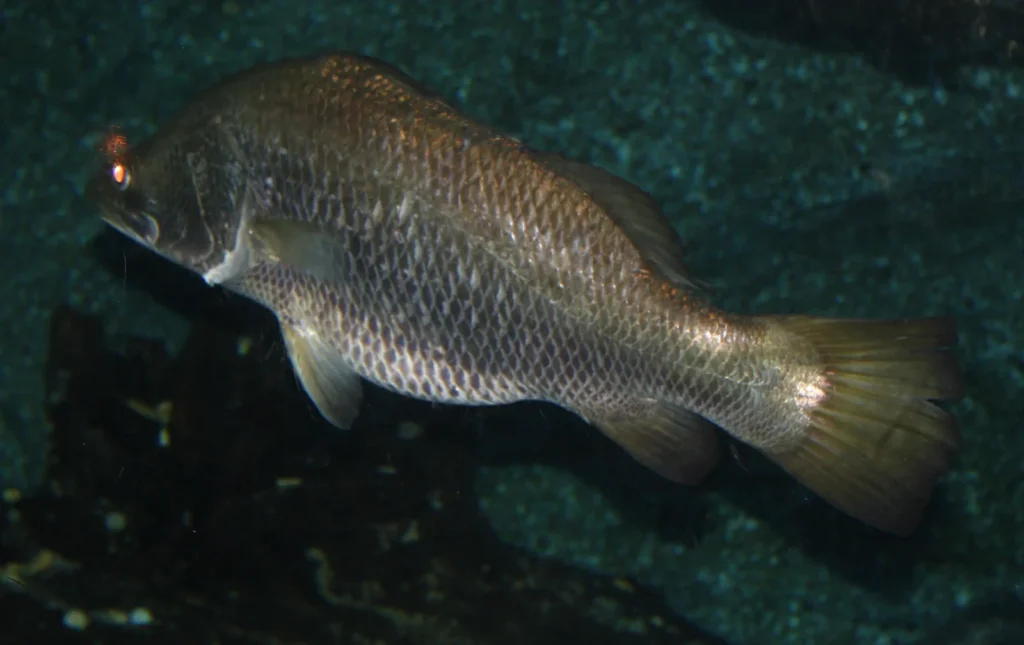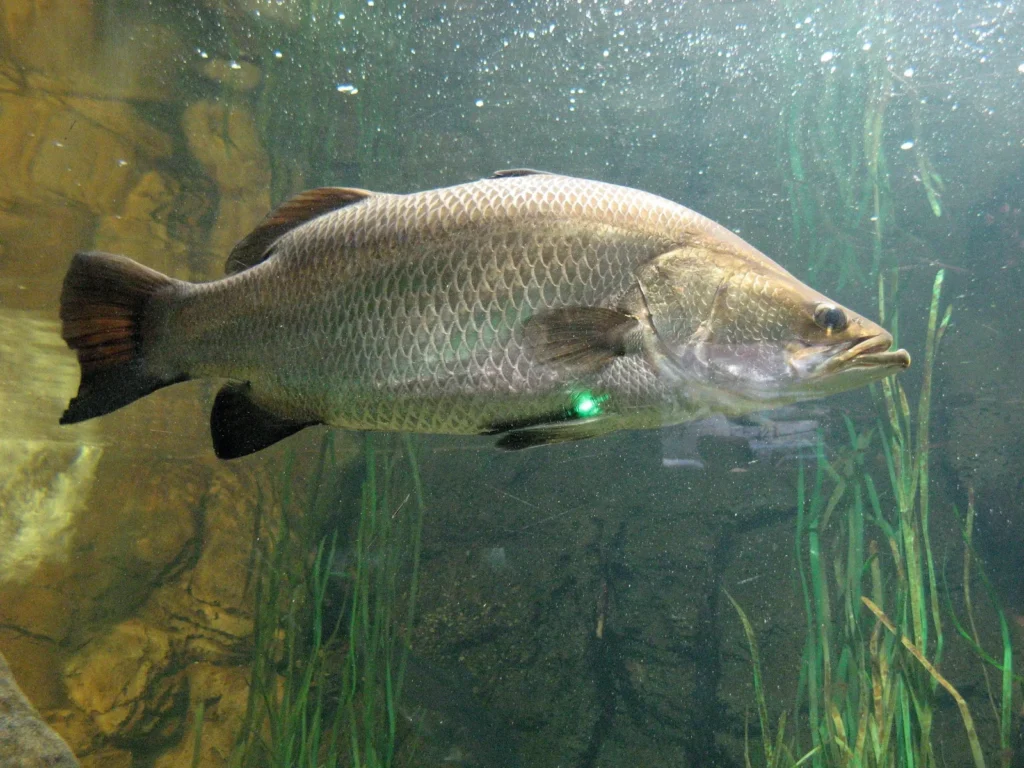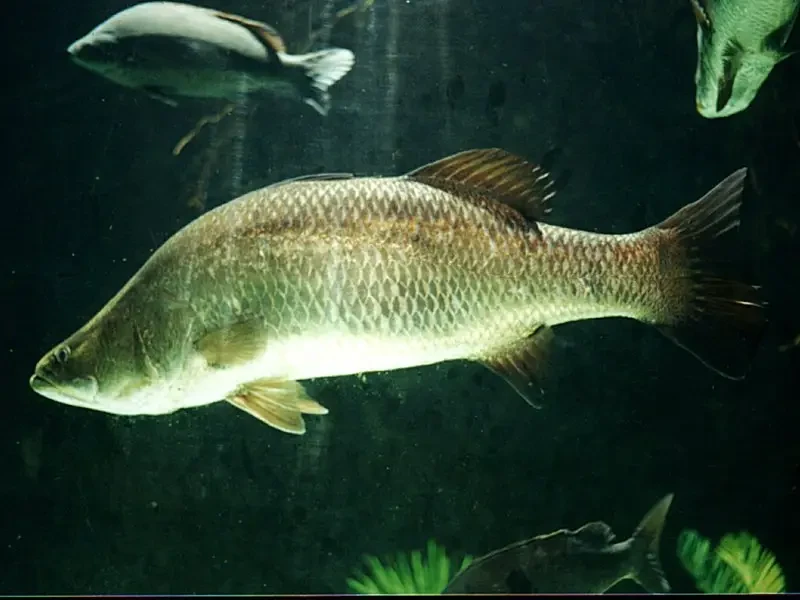Asian sea bass (Lates calcarifer), also known as barramundi or giant sea bass,- this is large predatory fish, which lives in tropical and subtropical waters of the Indian and Pacific Oceans.
This view it has important commercial and recreational significanceas it is highly appreciated for meat with a delicate taste, the ability to grow quickly and a strong sporting spirit in fishing.
🔥 What makes Lates calcarifer special?
✔ Ability to live in both fresh and salt water
✔ Impressive size-can reach more than 1.5 meters
✔ Fast growth and high endurance
✔ Very popular in sport fishing
✔ One of the most valuable species in fisheries and aquaculture
This one of the main commercial fish species, which is actively bred in fish farms in Australia, Thailand, Vietnam and other countries.

Scientific classification
🔬 Lates calcarifer taxonomy:
✔ The Kingdom: Animals (Animalia)
✔ Type: Chordal (Chordata)
✔ Class: Lucheperi pisces (Actinopterygii)
✔ Row: Perch-like (Perciformes)
✔ Family: Latesovye (Latidae)
✔ Gender: Lates (Lates)
✔ View: Lates calcarifer
📌 Interesting!
Title "barramundi ” comes from the Australian Aboriginal language and means "big river fish”.
Description and anatomy
, Main Features:
✔ Body length: on average, 50-100 cm, record individuals-more than 150 cm
✔ Weight: from 10 to 60 kg
✔ Life span: up to 20 years old
🔹 Appearance features:
✅ Massive, elongated body, compressed at the sides
✅ Broad head with a large mouth and a prominent lower jaw
✅ Large silvery scales that can change color
✅ Two dorsal fins-anterior with spines, posterior soft
✅ The caudal fin is wide and strong, allowing for fast movement.
📌 Interesting!
Young individuals have dark color with stripes, and adults become silvery-white or grayish.
Distribution and habitat
🌍 Where does Barramundi live?
Its range covers warm waters of the Indian and Pacific oceans - from the Persian Gulf to Australia and Southeast Asia.
🔹 Natural habitats:
✅ Rivers, lakes, and reservoirs (fresh water)
✅ Mango thickets and river mouths (brackish water)
✅ Coastal areas of the seas and coral reefs (salt water)
📌 Interesting!
Barramundi – catadromic fish, that is, it is migrates from fresh water to the sea to spawn.

Lifestyle and behavior
🔹 Basic behavioral traits:
✔ A solitary predator that actively hunts at night
✔ It can travel long distances, changing its habitat
✔ Territorial-adults protect their zone
🔹 Temperature range:
✅ Optimal temperature: 26-30°C
Выдерж Maintains the range of: 15-35°C
📌 Interesting!
Barramundi has labyrinth system of gill slitswhich helps it survive in water with low oxygen content.
Food and hunting
🔹 What does barramundi eat?
✅ Small fish (main diet)
Crayfish, crab and shrimp
Насеком Insects, shellfish
Собственная Own youth (cannibalism)
📌 Interesting!
Barramundi pulls prey into your mouth with a powerful vacuum suction..
Reproduction and life cycle
🔹 Interesting features of reproduction:
✔ First, all individuals are born as males!
✔ At the age of 3-4 years (80-100 cm), males can change their gender to females
✔ Spawning occurs in seawater during the full moon
✔ The female lays up to 30 million eggs
📌 Interesting!
Because of this unique feature in populations there are always more young males and fewer large females.

Barramundi and the man
🔹 Economic value:
✔ One of the major fish species in Australia and Asia
✔ Popular with athletes-fishermen
✔ Used in haute cuisine
🔹 Environmental status:
⚠ Commercial catch is controlled to avoid overfishing
⚠ Populations are stable thanks to aquaculture
📌 Interesting!
Australians call it barramundi "king of the mangroves”, and in Thailand it is considered a symbol of "happy fish ".
Conclusion
Barramundi (Lates calcarifer) is unique, hardy and delicious fish, which has of great importance for the fishing industry and sport fishing.
🌊 Its ability to adapt to different conditions, impressive size and powerful strength make it a true "king of tropical waters".
📢 Would you like to try to catch barramundi? 🎣🐟